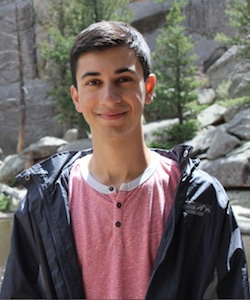One of the main reasons I decided to study abroad at Georgetown University in Doha, Qatar (SFS-Q) is to have the benefit of a Georgetown education during my semester-long experience in a foreign country. Along with the study abroad students at the Georgetown Villa in Italy, my two fellow main campus-ers and I are in the unique position of being able to experience Georgetown communities on two separate continents. Now, nearly a month and a half into my semester, I've noticed some interesting comparisons between a Hoya's life in Washington, DC and in Doha. Above all, however, I have been struck by the level of cultural diversity at SFS-Q. Having experienced life in DC for two years, I find it worthwhile to observe how cultural diversity plays a distinct but equally important role for students in both DC and Doha.
Georgetown's Washington, DC campus prides itself for its diversity, and rightfully so. The mix of people from different states, countries, backgrounds, and faiths contributes greatly to the concurrent senses of diversity and community that exist across most parts of campus. Beginning with our New Student Orientation "Pluralism in Action" event and continuing with the cultural organizations and global speakers that find themselves on campus throughout the year, Georgetown stresses the importance of combining the Jesuit value of social justice with a profound respect for diversity.
Now, almost two months into my Georgetown in Qatar experience, I find that cultural diversity is, in many ways, even more apparent here in Doha. The first day I arrived at the Georgetown building was the same day incoming freshmen participated in their “Pluralism in Action” discussions. I was able to join in for the tail end of the event, where we teamed up to make dozens of bags of dinner for some of the Georgetown staff. We then sat down with them in groups and heard a little about their experiences in life and Doha. My group listened to two Nepali men, not much older than myself, talk about their experiences immigrating to and working in Doha. Despite not having been home in nearly five years and working ten-hour days, both men had smiles on their faces and were very courteous and thankful for the meal we made. At SFS-Q, the cultural diversity of the migrant workers certainly seems to be respected and celebrated. As one student told me after our discussion, many cultural and informational events on campus are open to staff members, and they often end up being the only people to go!
The cultural diversity at SFS-Q extends beyond the staff—most faculty members and students come from all over the world as well. At any given time in the main atrium of the Georgetown building, one can hear people conversing in languages from English to Arabic to Urdu. While the main campus’s entering class of 2016 has an international student population (in regards to geographic distribution) of about 9 percent [1], the Doha campus’s student population is typically two-thirds international (one-third from other Middle East countries, one-third from the rest of the world) [2]. This tremendous diversity in backgrounds and nationalities contributes to the cultural richness of the discussions that take place in class, particularly when students from the countries we discuss share their thoughts and own experiences. Additionally, the international background of most Georgetown faculty members (both where they are from and where they have worked and studied) allows them to flavor our class discussions of international issues with varied perspectives and compelling anecdotes. Moving forward into the semester, I am excited to continue experiencing how cultural diversity factors into life at SFS-Q, and to see how my own background can contribute to richer learning inside and outside of the classroom.
[1] "Student Profile Class of 2016." Georgetown University Office of Undergraduate Admissions. Accessed September 25, 2015.
[2] Shrinath, Kshithij. "10 Years On, SFS-Q Pushes Boundaries." The Hoya. February 6, 2015. Accessed September 25, 2015.

